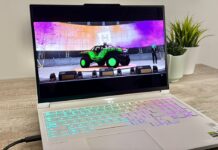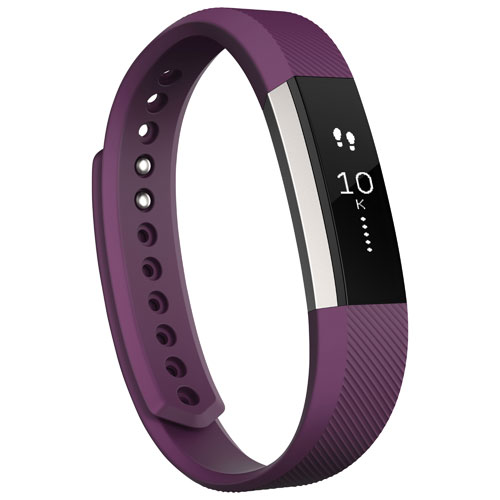 I’ve tried a lot of fitness trackers in the past few years. A few I’ve talked about on Plug In, and some I bought for myself to continue like the Fitbit Flex.
I’ve tried a lot of fitness trackers in the past few years. A few I’ve talked about on Plug In, and some I bought for myself to continue like the Fitbit Flex.
Why I buy a fitness tracker is probably the same reason why anyone would buy one: it motivates you to get off the couch, it keeps track of the activity you do so you feel a sense of accomplishment, and it challenges you by pushing you to do more and meet your fitness goals.
Fitness trackers really do work for me, and because I’m such a big fan, I’ve had one on my wrist pretty consistently over the past few years. Or I did until my Fitbit Flex fell off my wrist while I was moving houses and I never saw it again.
Life gets busy when you’re moving and renovating, so I didn’t think much about fitness let alone tracking it until the past few months. I’ve slowly been getting back into running, and although I manage to get myself out the door, I’ve really missed having a tracker to tell me how I’ve improved and keep me working toward a goal.
That’s why, when I was given the opportunity to test out the Fitbit Alta, I jumped at it. I’ve used it for two weeks, and if I had to sum up this entire review in a few words, I’d say it was easily the most seamless, simple to use fitness tracker I’ve ever used. Plus the simple style and all of the bells and whistles you get with it aren’t anything to scoff at either.
Here’s a look at the features on the Fitbit Alta
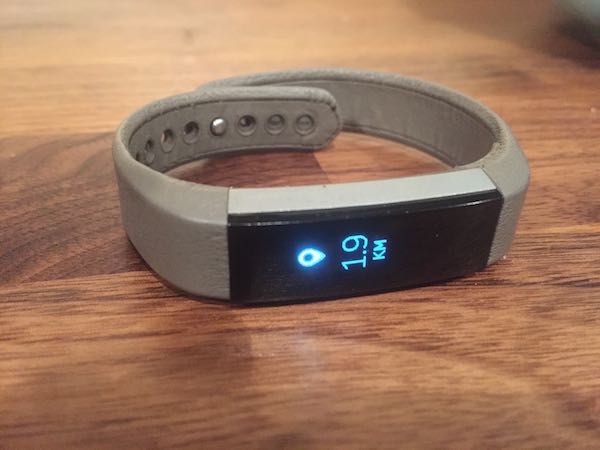
- OLED tap display that’s bright, clear, and easy to read
- Tap the screen to scroll through the time, steps, distance, calories burned, and duration of activity
- Tracks all activity including steps, stairs, distance, active minutes, and calories burned
- Tracks your sleep including duration, times you woke up, and deep sleep
- Has SmartTrack to immediately recognize the type of activity you’re doing so you don’t have to stop and let your fitness tracker know you’re about to go for a run or walk
- Vibrates to remind you to get up and move if you’ve been sitting for too long
- Pair it with your smartphone and receive text and phone call notifications, right on your wrist
- Seamlessly connects and synchs to the Fitbit app via Bluetooth 4.0
- Gives you a place to track your food, water intake, and weight fluctuations
- Keeps track of your all of your data so you can see exactly how your week or month is going
- 5 full days and nights of battery charge, and it takes approximately 2 hours plugged in to get your battery up to full power
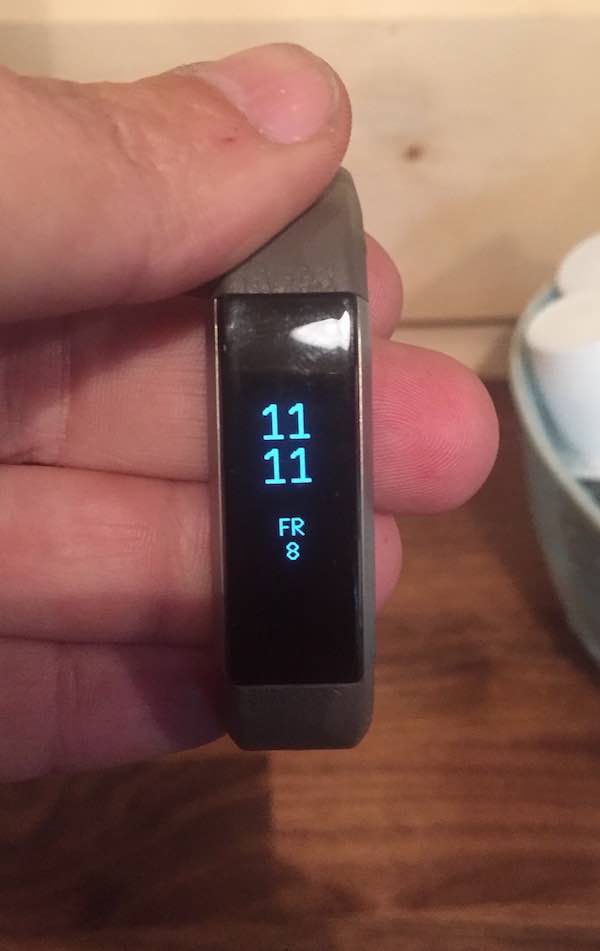 Testing the Fitbit Alta
Testing the Fitbit Alta
Appearance
The Fitbit Alta maintains the look of the Fitbit family, with a plug in base and an interchangeable band. As far as appearances go, the main difference between the Alta and other Fitbits is the sleek, stylish band and the size of the watch face.
The band with the Fitbit Alta is leather, and the clasp is extremely sturdy. I was a little concerned when I first started wearing it because I’ve already lost a Fitbit, but this clasp is easy to adjust and I never felt as though it was going to come loose or fall off.
The display lets you choose what type of clock face you want: vertical or horizontal. That way you can see your stats exactly the way you want them.
You can’t wear it everywhere: the Alta is not waterproof, so you have to take it off before you get into the shower or go for a swim.
Calls and text notifications
The first time I received a notification for a text on the screen of the Fitbit, it was totally unexpected. I knew it had that capability, but I didn’t realize that once you synched it to the app, it would automatically send your text and call notifications to your wrist.
You won’t get the full text sent to your Alta. It will only show half, and it will tell you that you have a text if someone sends you a photo, but it won’t show it. As for phone notifications, it was actually really nice to have my Alta vibrate in time with the phone. If I had left my phone somewhere nearby and it was set to vibrate, it was great to have it ring on my wrist.
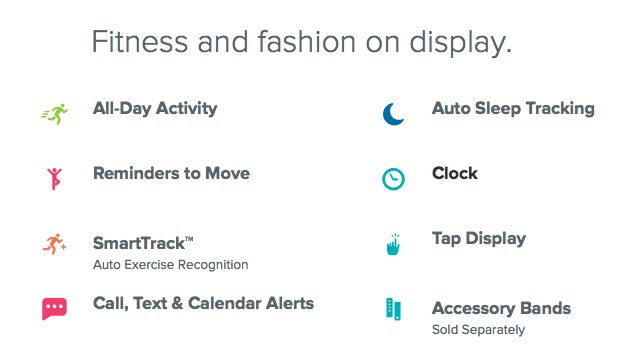
Tracking fitness with the Fitbit Alta
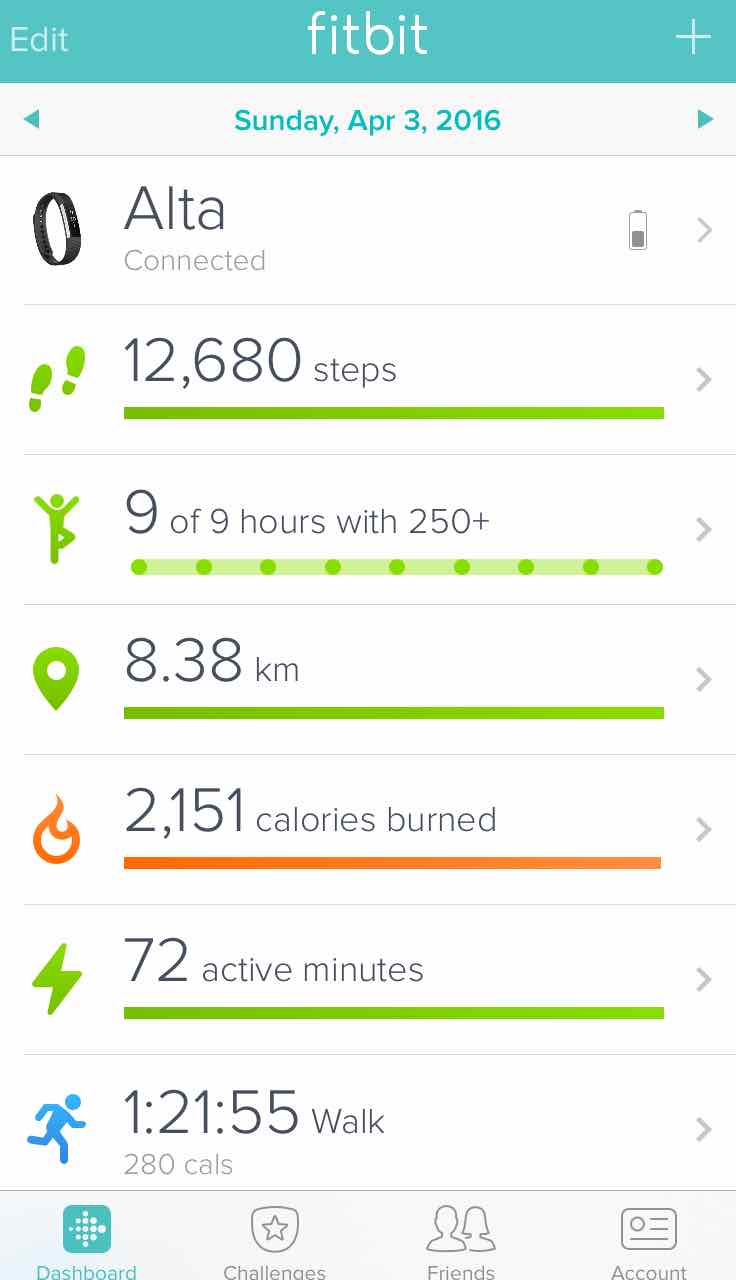
The biggest thing I want to get across about the Fitbit Alta is that it worked seamlessly for me. From the minute I installed the app and it synched for the first time, the Fitbit Alta tracked my movements and sleep. I can’t say enough about how amazing it is to use a fitness tracker that tells you what it’s doing instead of you having to tell it.
The first day I wore it I can’t say I spent much time thinking about whether or not the Fitbit Alta was tracking what I was doing, it just did. You have to tap the clock face several times in a row to see all of your data, so occasionally throughout the day I tapped the screen to scroll through my stats and it responded instantly.
I set the Fitbit Alta to notify me every ½ hour if I’m not moving enough, and it did that. I also set a weekly goal to hit 10,000 steps each day, and although I didn’t make my goal each and every day, I went well beyond that goal on several occasions. One my best day I took over 18,000 steps and traveled a distance of 12.19 km. That feeling of satisfaction I got is why I missed having a fitness tracker all these months.
The band and clock face of the Fitbit Alta give you all the information you need to see how you’re progressing during the day, but if you want even more data to keep you motivated, the Fitbit app is an amazing way to stay motivated. These are just a few of the features I used on the Fitbit app.
SmartTrack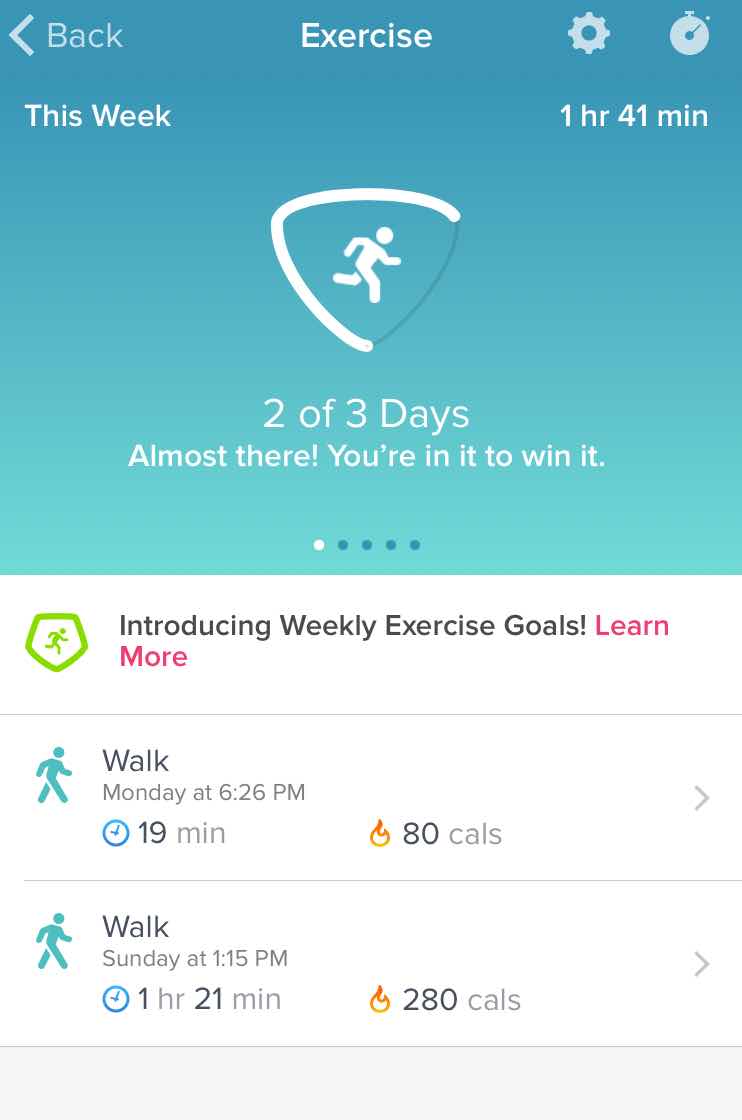
SmartTrack was one of my favourite features on the Fitbit Alta. It tracks your exercise without you having to do anything at all. Just start running and it will automatically notice you’re running, and it does the same thing for walking, spinning, mountain biking, and more. You can enter the category of exercise or just keep track of your distance, time, and calories burned.
I went for a long walk to test it out, and although I didn’t set anything or tell it what I was doing, it tracked me for an hour and a half and recorded all my stats for that exercise.
Calories
If you’re watching what you eat, you’re going to want to know whether you’re putting out more than you’re taking in. When you use the Fitbit Alta, it will track your calories beginning at midnight every night and resetting the following midnight. It tracks all night long too.
You can enter the different types of food you eat during the day right within the app, and compare it to the data the Fitbit Alta calculates from your daily activity. That way you always know immediately if you’re on track to lose weight.
The Fitbit app also tracks your water intake, and I’ll be the first to admit I don’t drink enough water. It made me think about grabbing a bottle of water, just so I could enter it into the app and hit my goal.
Hourly activity
The Fitbit Alta will track your hourly activity during the day, so if you’ve been sitting for long periods of time, it will vibrate to let you know and track you when you get up and move around.
I found this function really handy, because when I’m working I’ll just sit and zone out for hours. If the Alta vibrated, I made a point to get up and walk around.
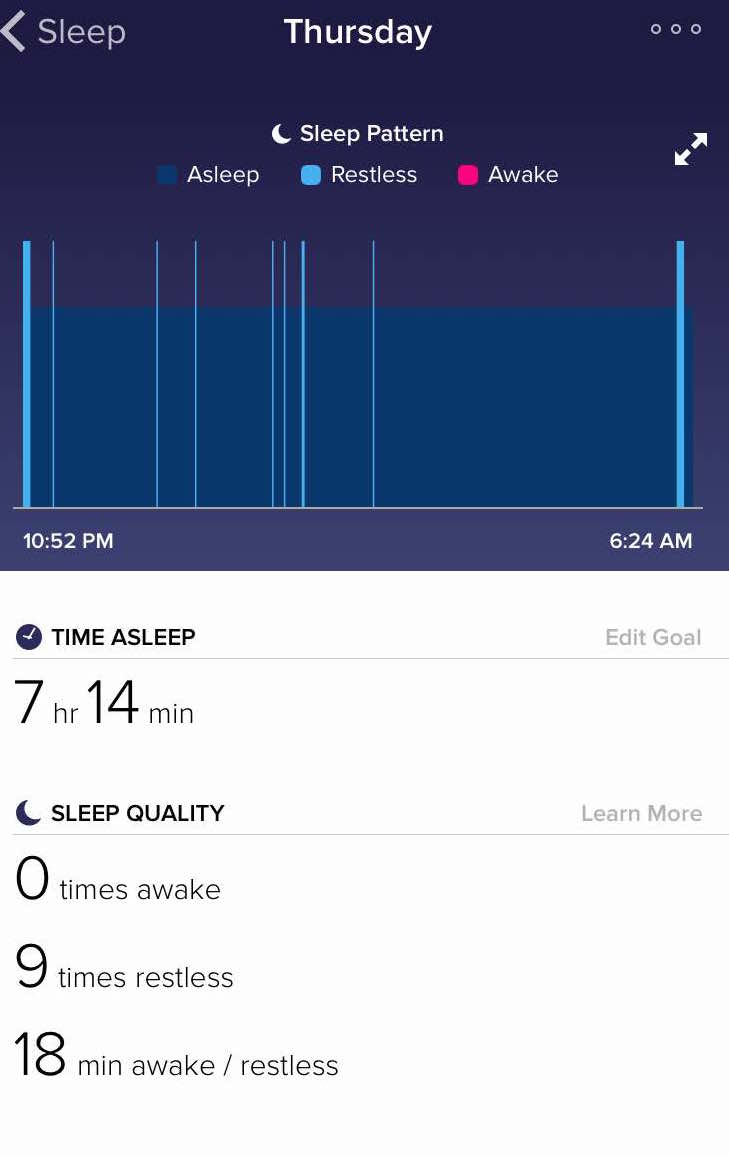 Sleep
Sleep
Although the Fitbit Alta won’t show you how well you sleep right on the band, you can the Fitbit app to see detailed stats.
Just like everything else with the Fitbit Alta, it works seamlessly to track sleep. The first night I went to sleep at 11 pm. I tend to wake up in the middle of the night and I can’t get back to sleep, so I woke up as usual around 2:50 am and went back to sleep at almost 5 am.
When I woke up in the morning I looked at my stats and it tracked my sleep exactly with those times. It also showed me that I have at least 14 times of restlessness during the night, and I get the same amount of sleep almost every night.
Maybe I’m not getting the full 8 hours recommended for adults, but I’m awfully close. I thought I slept much worse than that, so I was pleasantly surprised.
What the Fitbit won’t do
There are two things you might look for in a fitness tracker that the Fitbit Alta won’t do. It doesn’t have an altimeter sensor so it won’t track stairs climbed and it doesn’t have a heart rate monitor so it won’t track your heart rate.
Other Fitbits will track both of those functions, but the Alta seems to be designed for people like me: active, interested in the data, but not serious athletes who need to know if they are in the zone or someone who climbs hills for a workout.
For someone who stays fit or wants to stay fit and get motivated by running, walking, biking, and more, the Fitbit Alta is a great option.
Here’s a quick video I shot of what the Fitbit Alta looks like and a little bit of how it works with the app.
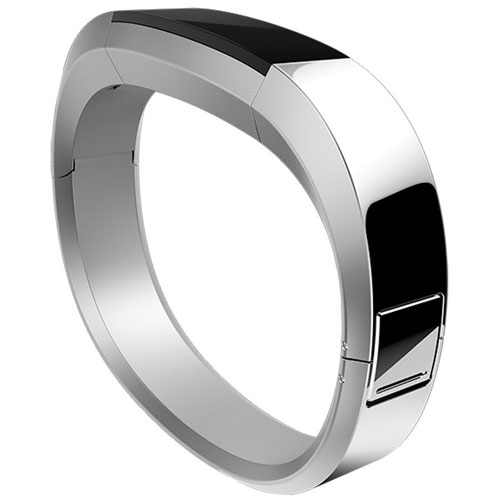 Alta Accessories
Alta Accessories
I think the Fitbit Alta looks great right out of the box, and I can’t imagine a place I wouldn’t wear it. If you want to change things up a bit, it’s very easy to switch out the bands, and there’s even a luxe metal band you can wear when you’re dressed up to go out.
Conclusion
One week with the Fitbit Alta and I’m completely sold. It’s easy to wear, easy to scroll through your data, and the app and Alta work together so seamlessly, you literally don’t have to do anything but take it off and charge it every 5 days.
The Fitbit Alta was exactly the boost I needed to get back into fitness after a long winter. If you need motivation without having to worry about fussing with your fitness tracker, take a look at the many styles of Fitbit Alta right now on Bestbuy.ca.



